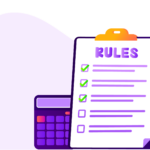What can you do about credit card debt and your retirement account?
- Half of Americans carry credit card debt
- The average debt is over $6000
- The pandemic has forced many to use credit cards
Credit Cards In America
Modern-day credit cards have a long history that reaches back in time many millennia. Bartering gave way to cash, so that goods and services could be exchanged differently, and then credit cards meant it wasn’t even necessary to carry cash. A little piece of cardboard originally, and then plastic, and you could spend whatever money you had in the bank.
It wasn’t long, however, before store cards became true credit cards. Soon you were able to spend more than what you had, because the issuing bank decided you were a good risk, and would be able to make the payments you incurred. This was a huge step, as it also gave banks the power to decide who did and did not deserve credit and the buying power that came with it.
Interest Rates And Payments
Over 9% of American’s payments were late by 90 days in the beginning of 2020. The coronavirus pandemic has further pushed Americans into debt, as financial disruptions abounded. Job losses in 2020 were enormous, and civil unrest and stock market fluctuations affected American’s income and savings.
With the average credit card interest rate above 17% consumers are paying more for the purchases they make using anything other than cash. Late payments or missed payments can up the interest rate even more, and carrying balances from month to month increases that again. Making minimum payments mean interest is being accrued each month, and the cycle means you continue to add debt to your debt.
Credit Card Debt And Your Retirement Account
Having a credit card is considered normal these days, but having a retirement account is not. A Solo 401(k) or Self-Directed IRA can help you save money for retirement so that you’re prepared for the future. Over 60% of Americans have at least one credit card, and the average consumer has about four. Fore retirement accounts, many Americans have a 401(k) through their work, but not much else, and there are many options available.
A Self-Directed IRA LLC (SDIRA) is a type of individual retirement account that allows retirement investors to use their IRA funds to make alternative asset investments. Self-Directed IRAs are similar to traditional IRAs, but they provide more investment options to IRA holders. By using this retirement structure, you can diversify your investment opportunities and invest outside of stocks, bonds, mutual funds, and other traditional assets. You can still make traditional asset investments, but if you’re more comfortable investing in assets like real estate and precious metals, the Self-Directed IRA LLC allows you to do so. Ultimately, this diversifies the assets inside of your retirement account.
A Solo 401(k) plan is a 401(k) qualified retirement plan that was designed for self-employed individuals and small business owners with no full-time employees, excluding a business partner and spouse. Much like the traditional 401(k), this unique plan encourages individuals to save for retirement in a tax-advantaged environment. When participants contribute funds into the Solo 401(k), taxes on the funds will be deferred until the participant takes a qualified distribution.
The Solo 401(k) is an IRS-approved plan that has the same rules and requirements as a traditional employer-sponsored 401(k). However, the Solo 401(k) allows participants to make annual contributions to the plan as both an employee and employer, which ultimately increases the yearly maximum contribution limit.
Credit Card Debt And Your Retirement
By taking money out of your retirement account, you may be subject to penalties and taxes, which can defeat the purpose. Not to mention that you’re shorting yourself if your retirement is quickly approaching. But, paying off credit card debt is a great step toward financial health and freedom. This can be more important than savings depending on how much you have stocked away, your age, and other factors you will need to consider.
Having a Solo 401(k) or Self-Directed IRA means you may be able to make a loan to pay off the debt, to yourself. Then you would pay yourself back and replace the money that you loaned to you. Carrying credit card debt can be problematic, and there can feel like limited options exist. Be sure to reach out to your financial advisor for more information.







